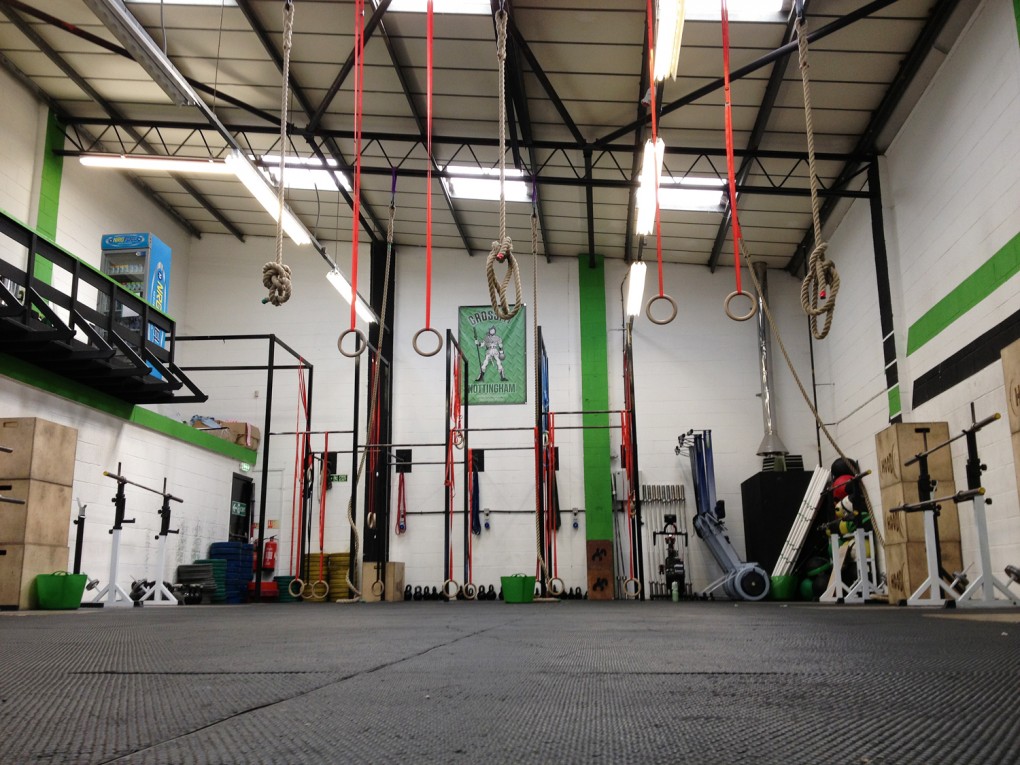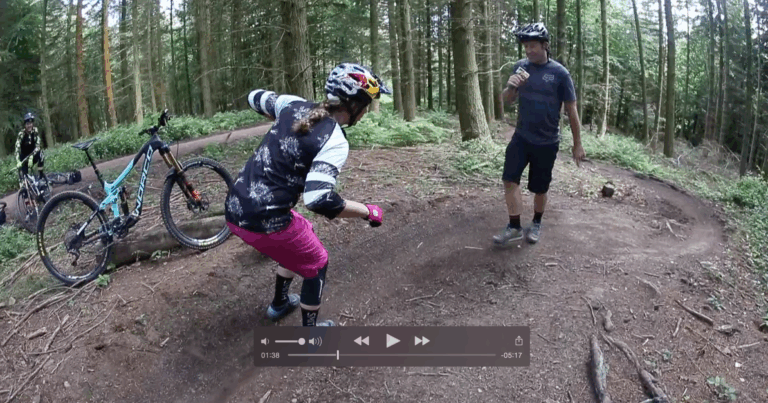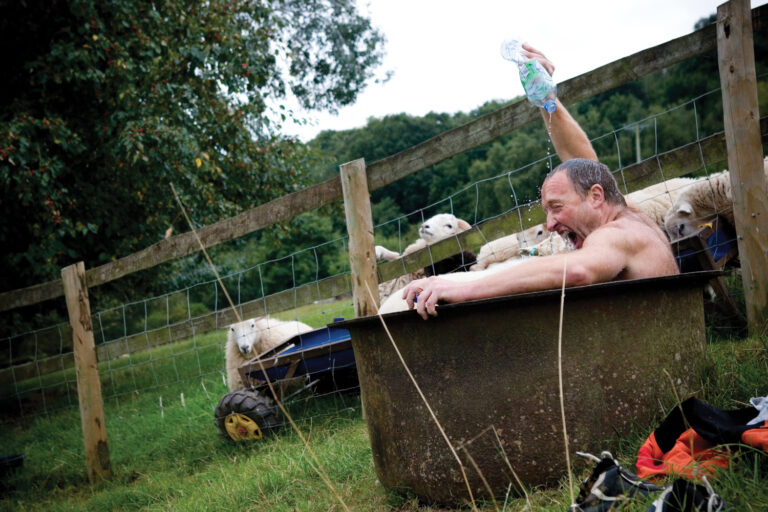
‘If it can be measured, it can be improved’. That’s certainly a mantra I’ve heard many times and I’ve even used it myself…
From Dirt Issue 135 – May 2013
Words by Darren ‘Conehead’ Roberts. Photo by Andy Ward/Crossfit Nottingham.
In terms of ‘what’ can be measured and ‘how’ it is measured on an athlete things have moved on at an exponential rate in the collection of performance data and the tools used to do so. Sports science has its map of the performance world, but what about the individual athlete’s map of their own performance world? Do we consider athletes as people or simply a series of data points and key performance indicators to be manipulated in an effort to ‘improve performance’? We constantly tell the athlete that they should know their own bodies, it’s key to an athlete’s performance that they know exactly how they feel and what that means. Yet we have machines and tools that tell us whether the athlete is hydrated or not, recovered or not, ready to train or not – we bombard them with results of tests that often contradict how they ‘feel’. Through science and data we can constantly undermine their own instincts, but it’s exactly those instincts we expect them to use in the heat of competition to perform at their best. Can our inability to ‘ask the right questions’ of the data we have on athletes lead us to look at too many things in isolation without seeing the larger picture? The explosion in sports science over the last few decades has caused by far as many problems, contradictions and confusion as it has solved anything. It has grown into a dark art which alienates and confuses athletes and coaches alike, but there must be ‘something’ in it so everyone ensures they have the ‘science’ covered off with a professional.
When I started out 20 years ago I had very few questions and an answer for everything…whereas now I have a lot more questions than answers. I’ve been through every phase, fad, gadget and latest ‘must do programme based on the latest research’ you can imagine. Taking what I was taught as gospel, and reading books on performance, which I then implemented without question. However, as I progressed through the performance ranks working with more and more high profile athletes, I got to meet some of the people whose work is taught, whose work is used as the foundation to underpin someone’s training programme, and they weren’t so sure about what they’d pinned themselves to anymore.
It’s not what we can or can’t measure on an athlete, it’s our inability to ask the right questions. The data can only tell you what you ask it, and it doesn’t tell you the ‘nature’ of a performance it can only tell you one thing in isolation. Looking at a winning performance, analysing it and the numbers in an effort to replicate it seems like a good idea. But we all know in sport that a poor performance can still lead to a win just as an outstanding performance can end in a loss. The data won’t tell you this, the numbers won’t reflect it. Equally, when it comes to training an athlete we immediately set about trying to improve them across all areas of athleticism without asking whether we even need to. Just because you improve an athlete’s three–rep max on all major lifts doesn’t mean they’re going to dominate that weekend, and what if they actually have a terrible result? Does that mean physically improving them is actually making them worse? Trainers are quick to associate themselves with success, which by default means they’re a good ‘coach’, but if the athlete has a shocker does that mean they’re a bad coach? I don’t see many trainers marketing themselves on the mediocrity of their athletes results – but it’s a fact of performance–life that if you own part of the win, you own part of the loss also. You can’t have it just one way. I worked with Paul Casey (a top golfer in the world) for many years, and we’re still very good friends. The first year I worked with him he went from 30th in the world to 130th (eventually he went on to be No.3). So what did that say about me? That I was an appalling trainer with bad methods? No, Paul was just playing absolutely shit…but I wasn’t out there telling everyone I was the bollocks either.
High performance coaching is more art than science – that’s something you soon learn in this job. Realising this was one of the keys to me being successful as a coach, treating athletes as people. This may seem obvious but you’d be surprised how bogged down in the manipulation of ‘numbers’ trainers get, which they then think is ‘improving’ the athlete’s performance. Athletes are people with clear opinions on what works for them, what makes them feel good, what training has worked for them in the past. Ignoring or discounting what the athlete thinks is a catastrophic mistake if you want to improve their ‘performance’. It’s not about simply improving their athleticism, you need to look at them as a whole person and ask them what they need. It’s what we call ‘create the performance playground’ – creating the environment for them to express their potential. This isn’t just about getting them to squat more weight in a gym, that’s not creating an environment for them to express their potential. The performance playground for extreme sports athletes can be a literal playground like snowparks, skateparks, trail centres, dirt jumps, etc. Being in these environments with other athletes who are as good as or better than each other means everyone pushes each other. Riding with people much better than you has a massive effect on your own ability, way beyond what you could achieve on your own trying to improve your own skill level. We’ve all experienced this, everything gets kicked up a notch and it happens organically. This doesn’t mean you don’t add structure to something like this, setting goals and outcomes for time spent in the playground helps maximise the benefits of the group creative and innovation dynamic, whilst pointing them in a direction. It’s also during time in the playground that the athlete will identify shortcomings in their own physical performance, and it’s at that point the fitness trainer can swing into action. Rather than starting in the gym trying to improve strength for the sake of improving strength, which the athlete may not see the relevance) – this puts the athlete at the centre. This is what we strive for, create the playground and environment – let them express themselves and any performance gaps will be there for the athlete to see and identify themselves. Finding that performance gap and filling it, rather than training everything for the sake of training everything.
The question I ask myself on a daily basis, and what I tell any performance practitioner to ask themselves is, “what is the limit to my athlete, is that limit me?”. We all want to help, but is it my own narrow view of the world and what I think is possible or ‘this is how it’s done” attitude that slows my athletes down? For the elite, perception can be greater than reality. It’s my job to provide them with the environment, education, tools and resources to express their potential. Anything else and I might just be slowing them down…
Darren Roberts is Head of High Performance at Red Bull UK working with the likes of the Atherton family, Danny MacAskill, MX enduro star David Knight and many, many others.
This article is part of the Work Out series. You can find the rest of Darren Roberts’ training tips through the links below:
[series]





